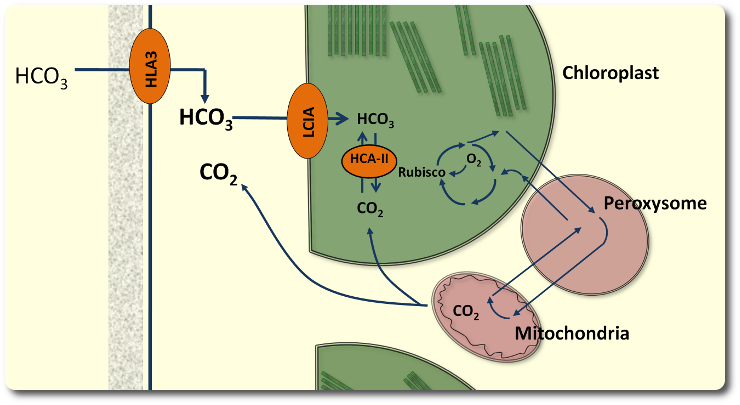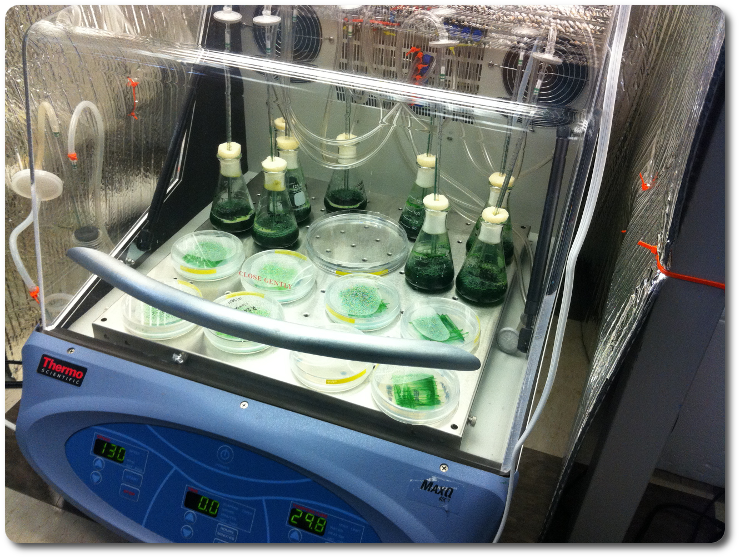 The overall objective of this project is to engineer Arabidopsis thaliana, a C3 plant, to concentrate CO2 near the active site of the carbon fixing enzyme RuBisCO in order to favor carboxylation activity and improve photosynthetic efficiency. We will subsequently quantify changes in photosynthetic metabolism using isotope labeling and INST-MFA studies of leaves. No current isotope-based metabolic flux models exist for leaves, thus limiting understanding of photosynthetic plant metabolism and preventing rational metabolic engineering of plants for agricultural applications. We hypothesize that intracellular carbon dioxide levels are limiting photosynthetic efficiency in Arabidopsis, and we are testing this hypothesis by engineering plants that express heterologous proteins designed to "pump" CO2 into leaf chloroplasts.
The overall objective of this project is to engineer Arabidopsis thaliana, a C3 plant, to concentrate CO2 near the active site of the carbon fixing enzyme RuBisCO in order to favor carboxylation activity and improve photosynthetic efficiency. We will subsequently quantify changes in photosynthetic metabolism using isotope labeling and INST-MFA studies of leaves. No current isotope-based metabolic flux models exist for leaves, thus limiting understanding of photosynthetic plant metabolism and preventing rational metabolic engineering of plants for agricultural applications. We hypothesize that intracellular carbon dioxide levels are limiting photosynthetic efficiency in Arabidopsis, and we are testing this hypothesis by engineering plants that express heterologous proteins designed to "pump" CO2 into leaf chloroplasts.
Funding support: NSF EFRI (Sayre PI)
Graduate student: Lara Jazmin
Key collaborators: Dick Sayre (New Mexico Consortium), Doug Allen (Donald Danforth Plant Science Center)
 One key application of isotopically nonstationary MFA (INST-MFA) is that it can be used to determine metabolic fluxes in autotrophic organisms using 13C tracers, an application that is not possible using conventional steady-state MFA. Working with collaborators at Purdue University, we have applied this approach to quantitatively map fluxes in the photosynthetic bacterium Synechocystis under fully autotrophic conditions (
One key application of isotopically nonstationary MFA (INST-MFA) is that it can be used to determine metabolic fluxes in autotrophic organisms using 13C tracers, an application that is not possible using conventional steady-state MFA. Working with collaborators at Purdue University, we have applied this approach to quantitatively map fluxes in the photosynthetic bacterium Synechocystis under fully autotrophic conditions (